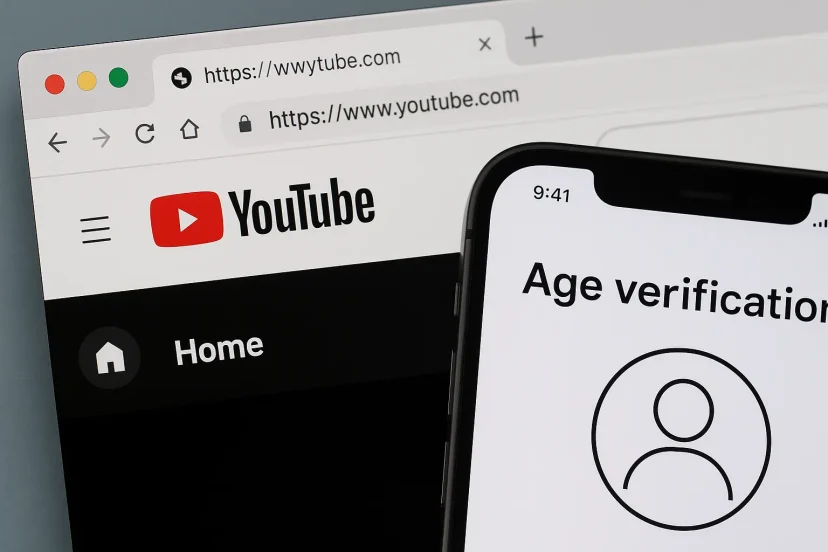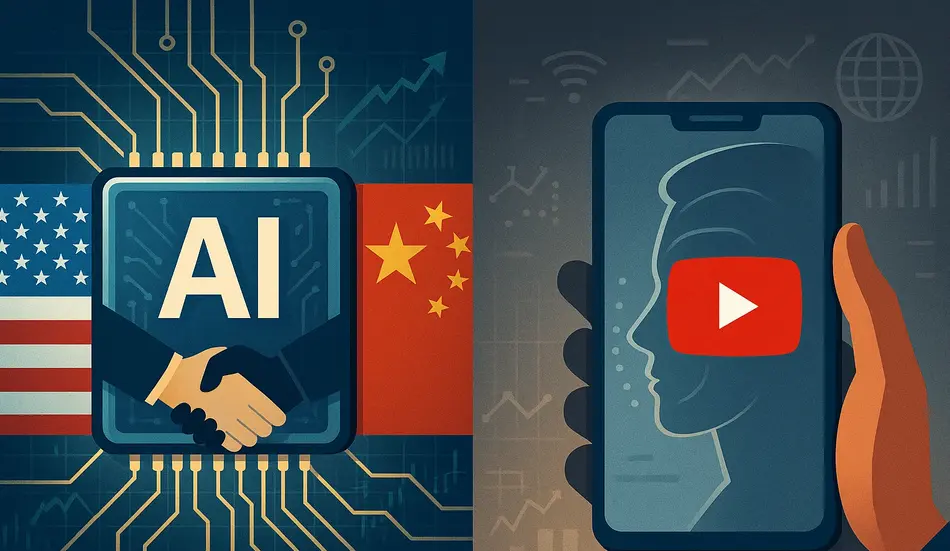U.S.–China AI Chip Deal 2025 marks a landmark decision that underscores the shifting dynamics of technology, trade, and regulation. The U.S. government has approved a highly unusual arrangement allowing Nvidia and AMD to sell artificial intelligence chips to China. In exchange, Washington will take 15% of the revenue generated from these sales — the first time a revenue-sharing model has ever been tied to an export license.
The deal, described by analysts as “unprecedented,” raises fundamental questions about national security, trade policy, and the future of AI competition between the U.S. and China. Meanwhile, major AI players like Anthropic and OpenAI are pursuing their own aggressive government strategies, offering their AI platforms to federal agencies at symbolic prices to secure lucrative long-term contracts.
And in another development, YouTube announced it will begin testing an AI-driven age verification system in the U.S., sparking debate about child safety, privacy, and parental responsibility.
Table of Contents
U.S.–China AI Chip Deal 2025: U.S. Takes a Cut of AI Chip Sales to China
Traditionally, U.S. export controls have focused on limiting or blocking sensitive technology sales to China. These controls were designed to prevent China from acquiring cutting-edge AI chips that could power everything from advanced surveillance systems to military applications.
But the Trump administration has charted a new path: rather than outright bans, it has agreed to a revenue-sharing mechanism. For every AI chip sold in China, Nvidia and AMD will pay 15% of sales to the U.S. government.
Technology journalist Jacob Ward explained:
“We’ve never seen the government take a cut of corporate sales like this. It doesn’t address the national security concerns, but it represents the transactional, deal-driven approach we’ve seen under President Trump.”
While Washington frames the move as a strategic tariff-style arrangement, critics argue it may undermine the very purpose of export restrictions. Beijing has already pushed back, warning it may reject the chips altogether over fears of U.S.-installed “back doors.”
Hire Talent Driving the AI Revolution
Post your job on WhatJobs and connect with engineers, data scientists, and innovators ready to shape the future of AI, chips, and digital trust.
Post a Job Now →AI Companies Lobbying the U.S. Government 2025: Anthropic and OpenAI Take the Lead
While Nvidia and AMD grapple with trade negotiations, AI startups are taking a different approach: giving their technology away at first.
Anthropic has offered its AI chatbot to the U.S. government for just $1, following a similar strategy by OpenAI. The goal is clear: secure government adoption of their technology, build dependency, and later win contracts worth hundreds of millions of dollars.
Ward notes that:
“It’s a loss-leader strategy. They want government agencies to get hooked on the tech. Once they rely on it, the companies can scale up contracts at much higher value.”
This move reflects the intensifying race to dominate AI procurement within the federal government, which has become one of the most valuable customers in the global tech market.
YouTube Tests AI Age Verification
In parallel, YouTube announced it is piloting a new AI-based age verification system in the U.S. The tool uses machine learning to analyze viewing patterns, attempting to determine whether a user is a minor or an adult.
The company claims success in other regions, but privacy advocates warn of serious risks. For example:
- A 16-year-old misclassified as a minor may be forced to upload government ID, undermining online anonymity.
- Critics worry this could set a precedent for broader mandatory identity verification online, eroding digital privacy.
Ward cautioned:
“Once an 18-year-old has to show a driver’s license to watch a video, anonymous browsing is effectively over. That’s a huge cultural and privacy shift.”
The system also raises questions of fairness, as distinguishing between a 16-year-old and an 18-year-old may prove technically unreliable.

Broader Implications
These three developments — chip sales, AI government contracts, and platform-level age verification — highlight how AI is reshaping trade, policy, and society simultaneously.
- For the U.S. government, AI has become both a security concern and a revenue stream.
- For companies, access to federal contracts and international markets will define long-term survival.
- For users and families, AI is already determining what content is accessible and under what conditions.
As Ward summed it up, the U.S. is entering “a new era where AI is not just about innovation, but about sovereignty, economics, and control.”
FAQs
1. Why is the U.S. taking a 15% cut from Nvidia and AMD’s China sales?
This arrangement is designed as a compromise: it allows companies to continue selling AI chips while ensuring the U.S. government directly benefits financially. However, it does not fully address national security concerns over advanced chips being used in China.
2. Why did Anthropic and OpenAI offer their AI systems to the U.S. government for $1?
It’s a strategic move to secure government adoption. Once agencies depend on their systems, these companies can pursue large, long-term contracts worth hundreds of millions of dollars.
3. How does YouTube’s AI age verification system work?
The system analyzes a user’s viewing patterns to estimate their age. If flagged as underage, users may be required to provide government ID for verification. This has raised concerns about online privacy and anonymous browsing.
4. What does this mean for the future of AI regulation?
These developments suggest that the U.S. government is becoming more interventionist — not only regulating AI but also profiting from it. At the same time, platforms like YouTube face growing pressure to protect minors, even if it comes at the expense of privacy rights.




